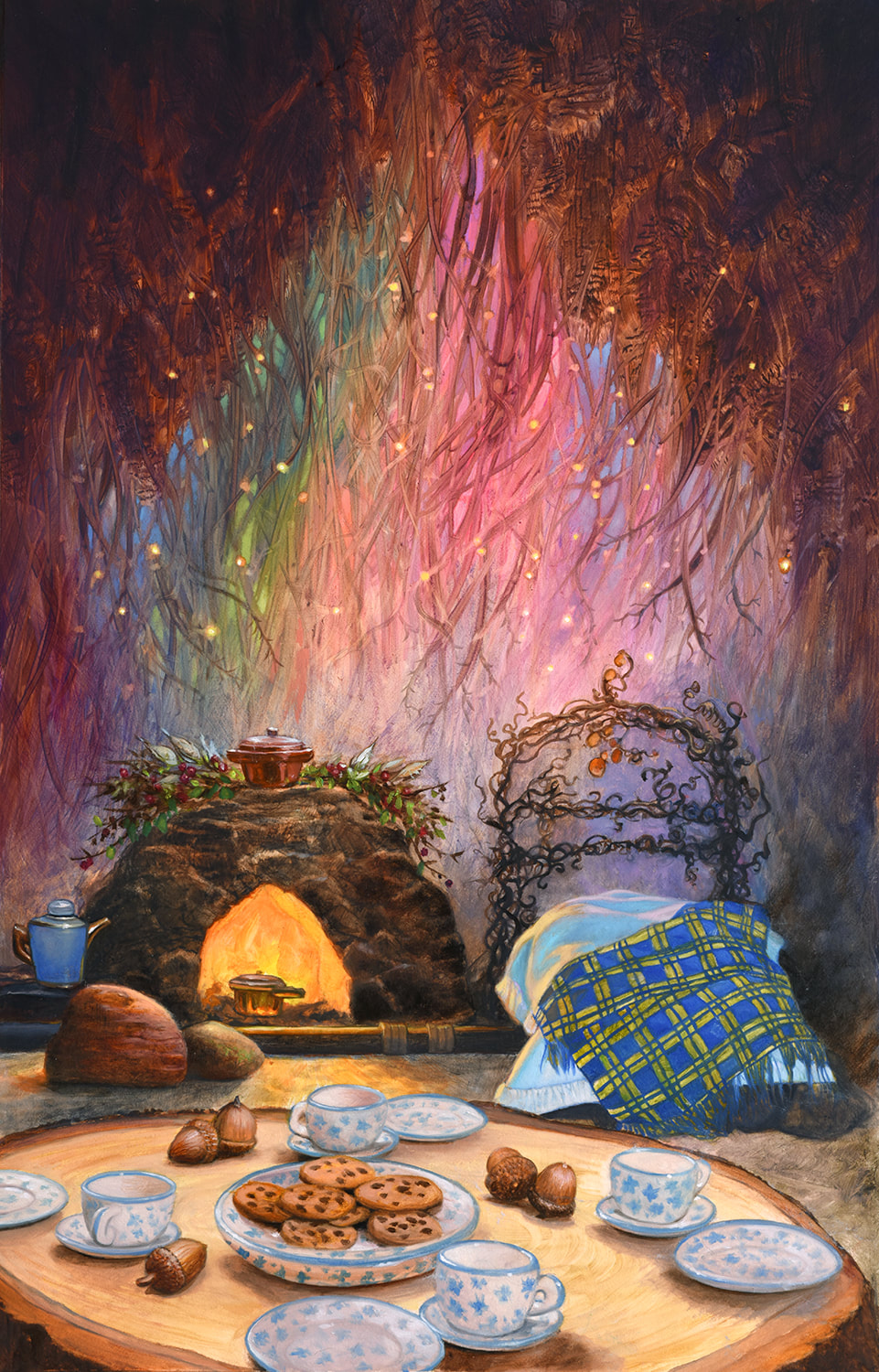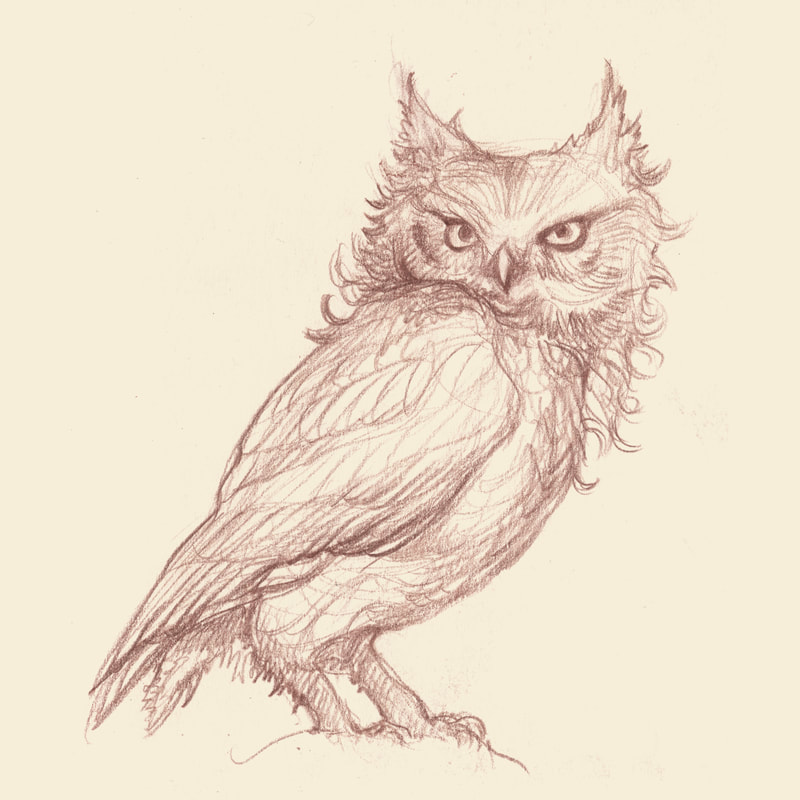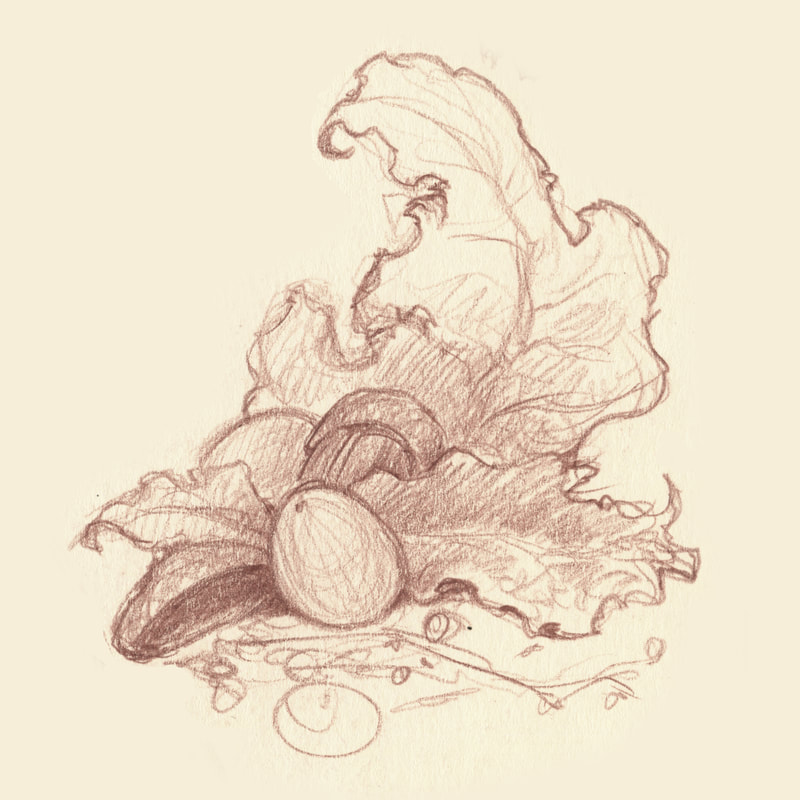More to Come
Return of the Vinetropes is the first book in the THE VINETROPE ADVENTURES series.
About the series - AUthor's ThoughtsI wanted this to be a truly modern fairytale adventure. Because of that, I didn’t want to completely rely on the concept of pure magic. Yes, that can be wonderful too, and I love it, but for me, what I think makes this a unique and modern “fairytale,” is that I have dressed it up in the technology and science of today to make it more relevant and hopefully more engaging for today’s older child. The story’s foundation is still based on those universal themes, architypes and emotions that have captured the hearts and imaginations of children and adults for all time. But by having the premise make some sense, having it have some basis in science and “reality,” I think I’ve made it more believable.
I want this story to allow the reader believe that “yes, vinetropes could have existed, yes, they might have existed and be the fairies of our tales and legends; they might have existed eons ago in a time before humans and if they then emerged sporadically, never fully flourishing again until now, they would have influenced and sparked our imaginations since mankind told its first tale. The deep and ancient civilization of vinetropes is for fairies what Tolkien’s Middle Earth is to humankind and it is that magical place where they crossed paths and coexisted. Even when I was little, it was enough to say, “The wee-folk do exist, if only I believe hard enough, maybe it will be so,” but today the young reader has more questions and is more engaged with science and technology. Creating a premise that has some validity, gives the story the foundation on which the magic can once again come to life in a new way, in a way thathopefully resonates with today’s children. In truth, the miraculous is real for me. |
There is magic and the great magic is the miracle of the universe and of us. And what seems magical is actually the truth of things at such a deep level that we cannot comprehend it. But it is understandable, just not for us at our level of awareness. We don’t understand all the rules and laws that allow precious life to exist, especially life with enough awareness to ask, what is life? We are not able to unravel our own “magic” from where we stand at this place, in these bodies and in this moment in space and time. But there is magic and that magic is the truth in all its completeness. So my premise is also spiritual as well as “scientific.” Much remains mysterious and cannot be answered.
|
And if this premise works for fairies, it will work for other fantasy creatures too. There could be the return of the evil beings of legends, the goblins and trolls and possibly even the wondrous and frightening dragon. In fact, there might be bad guys we never heard of, like my chargons and vinkali! The premise becomes a world of its own, but within its core I have placed the seed of belief in the miracle of life and the meaningfulness of life’s struggle. From the moment of Lucinda’s birth, when she breaks open her pod, until the conclusion of this saga, I have tried to invoke this spark of the miraculous.
This leads me to share some of the interesting facts I encountered in creating a premise with this “believability” factor. I wanted to associate vinetropes with the plant world, to make their nature different than our own, but familiar and recognizable. It made sense to do so because we already associate them with the forest and nature. And as we learn, the vinetrope culture was based on living in harmony with nature. Vinetropes represent unity and environmental balance and even their blood is a source of clean energy, something humans desperately need. Vinetropes are the protector of the environment and yet communicate with animals affectionately. Their blood is a source of energy for them and others and is conceived of as pure and special kind water with the power to generate life-altering influence on the world around them. It seems as simple as water and yet it is supremely powerful. They can spray it from a special watering vine and it also radiates from their bodies as a potent, positive and nurturing field, giving the gift a speech and self-awareness to certain animals.
|
Lucinda's home, with the root system generating energy
|
I decided to make this energy a combination of photosynthesis and cold fusion. Plants respire and metabolize, producing the energy they need to live, by the process of photosynthesis. So I needed to learn a bit about that process. But that alone didn’t seem sufficient to make vinetrope energy “magical” so I added the ingredient of cold fusion. I needed to learn some things about that too. The idea that we can ever harness cold fusion is still being debated, but if we could, what makes it so intriguing is that it is not only immensely safer than hot fusion, as in the destructive capacity of the hydrogen bomb, but that the energy it creates seems to be non-polluting! Perfect for a vinetrope and cold fusion ramps up the power of their photosynthesis making the combo a potentially time/space bending form of energy.
Photosynthesis is the process plants use to convert the sun’s light into chlorophyll. This process also produces the world’s oxygen from plankton in the ocean, 70%, and our rainforests and other forests. I learned that Chlorophyll has been shown to promote healing when sprayed on a wound! It also promotes cleaning in the environment by binding with certain toxins and destroying them. It has been shown to do the same with some carcinogens. So vinetropes, who have this cold-fusion, souped-up form of photosynthesis, are able to clean the environment just by living in it. Their very presence is healthy for the earth and us.
Another interesting fact about photosynthesis is that there are sea slugs that eat algae but don’t digest all of it. The algae remaining in the slug simply continues with its photosynthesis and this adds to the slug’s energy source. This shows a crossover between the plant and the animal kingdom. Could another new creature be on its way into the saga? And there are two kinds of photosynthesis. I didn’t know that. There is the one we know and also one that takes place very deep in the ocean where sunlight doesn’t reach. It seems to produce its energy by using the very faint light from hydrothermal vents on the ocean’s floor. Could this mean mermaids exist too? Could the oceans now begin to be populated by mermaids and mermen? I’ll have to ponder that one.
And now for the bad guys: fungus of course. So I needed to read up some on fungus. I did, but the most amazing thing that happened, was after I had already devised my bad guys. The first book was done and Julie had already finished illustrating it. Julie heard a podcast about fungus that blew her mind and she sent it to me right away. We are totally in tune with each other’s work and she knew I would love this. There has been a revolutionary understanding of fungus and its symbiotic relationship with plants and bacteria that is fairly new and is not much known by the general population. It was discovered only in the last few years and it supports my ideas about the bad guys in my book and the solution I have for them in the second book, which I can’t tell you about yet. So here is some real magic! Reality supports my fantasy and it does so for me after the book was finished. But it will all be used to good purpose in Book Two.
Here are the FASCINATING Facts
|
The chargons are the tall wolf-like creatures and the vinkali are their mischievous side-kicks. The lanterns they hold are aglow with bog light.
|
An intricate network of Mycorrhizae fungi as large as the network of the roots of plants helps virtually all land plants absorb the essential nutrients of phosphorus and nitrogen from the soil. The fungi at the same time also receive nutrients from the plants. This has been going on for 450 million years, and our botanists have known about that for a long time. But there is also disease producing fungi which breaks down the cell walls of plants in order to get what it needs and that leads to the disease and death of the plant. What has recently been uncovered is that some fungi in coordination with certain bacteria or microbes can “ask” for the nutrients without breaking down the cell walls of the plants. When the “good” fungi ask for the nutrients in this more cooperative way, the plant actually builds a tube in which the fungi can safely grow and connect right to the plant. The exchanges can then be made safely.
These communications of mutual benefit occur chemically and mechanically. If the signal from the fungi and microbes in a symbiotic association is right, the plant can almost “smell” that this is a mutually beneficial situation and then the plant actively reaches out to the fungi. Amazing! Now we are getting somewhere with my bad guys in my story. The really bad guys, the chargons, are self-serving, unable to really feel connected or compassionate to other living things, much like sociopaths. They are like the fungi that breaks down the cell walls of the plant and causes disease and death, just taking what they want. They are not able to connect with the plant world or to anyone else. They are made this way and they are both clueless and ruthless. Could this be solved? |
This is question for the next book, where I will use this research to further benefit. The vinakali are a fungus too, but they seem a different species than the chargons. They are a confused species, raised and controlled by the chargons, but with greater capacity for growth if they could be freed from the chargons control. Their problems are more of nurture than nature. When I created these fungi bad guys, I knew their traits and characteristics and that main thing wrong with them was an inability to be connected to the larger world. I had concluded that something was wrong with them chemically and I would need to find a resolution for this flaw in them, but I didn’t know that I would find so much science on which to develop and resolve their natures. Julie knew it would be important to me as soon as she started listening to this podcast on fungi. That’s why she sent it.
And speaking of connectedness, it is easy to see the parallels between this whole connected network of plants, fungi and microbes and all of us other animal/human creatures running around and breathing oxygen. An amazing fact I learned is that it is all not as simple as plants giving off oxygen and animals giving off carbon dioxide in a symbiotic system. There are subtleties to the system. Plants don’t actually give away all their oxygen during their metabolic process, they store a bit because oxygen is needed to break down carbohydrates, just like it is for animals; without oxygen the metabolic process wouldn’t happen for any living thing. So they need a bit of oxygen, even during photosynthesis. And in the night, when there is no sunlight, which is needed for photosynthesis, how do plants get there energy and stay alive then? I never thought of this! At night they absorb a bit of oxygen from the air to keep their energy going and give off carbon dioxide…just like we animals do. So surprising! But don’t worry, plants are still are our oxygen producers, making ten times as much oxygen each day than they consume at night. What a miraculous system made just right for life to flourish.

And that brings us to technology, the Internet and how computers work and how I incorporated some of those facts into how vinetropes work. I envisioned vinetropes being made of a crystal type structure of cellulose, like celery, that in some ways is similar to the silicon crystalline structure of silicon used for computer chips. (And by the way, silicon makes up 27% of the earth’s crust!) In computers, crystals of silicon, shaped like long pipes (or root-like) are sliced into discs called wafers. These slices are then marked into identical squares or rectangles which together become one microchip per wafer. Then thousands, even billions of components are put onto each chip. This allows the chips to become interconnected or integrated with the other chips as in integrated circuits and this happens on the microscopic and nano-scopic level. The nanoscopic level is where atoms, molecules (atoms joined together) and cells function…as they do for everything else in the world and as it appears to do in the integrated circuits of computers.
A computer programmer then needs to compile a code for the computer to upload into the circuits so the computer can store data and do the things it does. Compiling means converting the code from a readable human language into a readable code language that the computer understands. It is made up of ones and zeros, which is the equivalent of the ons and offs for the circuits.
A computer programmer then needs to compile a code for the computer to upload into the circuits so the computer can store data and do the things it does. Compiling means converting the code from a readable human language into a readable code language that the computer understands. It is made up of ones and zeros, which is the equivalent of the ons and offs for the circuits.
Vinetropes, with their organically integrated cellulose circuits, can store and use immense amounts of information too. It is like their whole body is a big brain. They can also communicate with all the plant life in vast areas through the root systems that connect all the plants. They had been unknowingly coding roots to do things in ancient times, like to heat and cool their homes, when they sprayed the roots with their amazing vinetrope water. The roots would then pull the heat out in the hot weather or generate heat in the cold. Vinetropes had a built in code for survival, using the clean energy their bodies naturally produced. But once vinetropes are exposed to computers, they learn they can connect to our Internet as well. Then they learn how to program consciously. They can spray the code, which is translated into the exact language the chosen plant needs, onto the roots and the roots will pass the code along until all the roots are working in unison toward a specific task.
With this powerful energy, comprised of photosynthesis and cold fusion, vinetropes begin to bend space and time with their advanced coding and understanding. In the next book, the children (2 boys join the girls) will be able to travel in a blink of an eye to destinations 100s of miles away. Vinetropes are truly connected to everything, more so than any other living thing on earth. So I used very basic facts about computer boards and programming to help create the workings of vinetropes.
With this powerful energy, comprised of photosynthesis and cold fusion, vinetropes begin to bend space and time with their advanced coding and understanding. In the next book, the children (2 boys join the girls) will be able to travel in a blink of an eye to destinations 100s of miles away. Vinetropes are truly connected to everything, more so than any other living thing on earth. So I used very basic facts about computer boards and programming to help create the workings of vinetropes.








